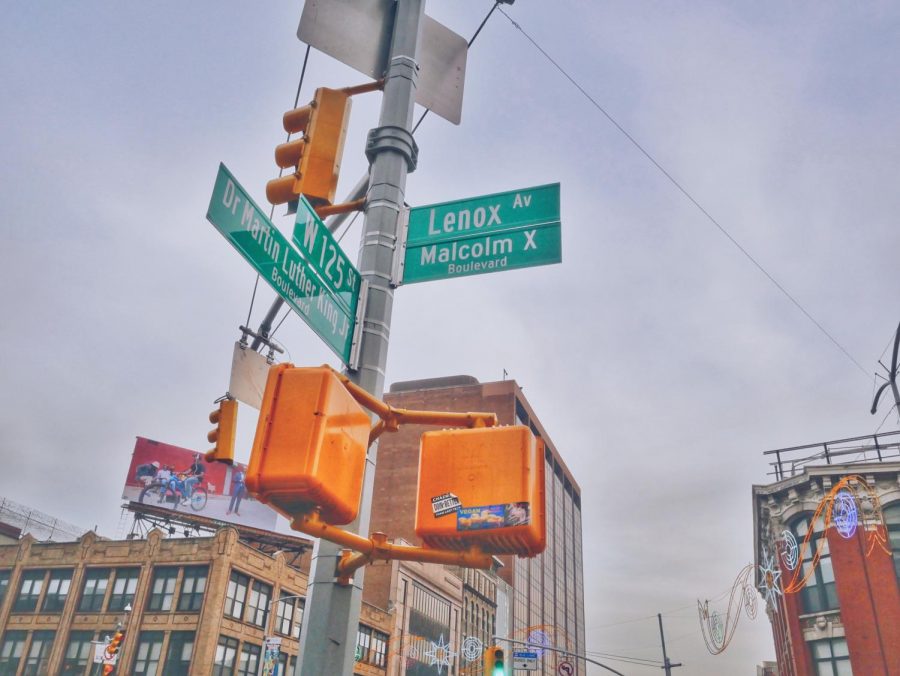The Story of Harlem
The past, present, and future of an iconic neighborhood.
One of the busiest intersections in Harlem is the one at Lenox Avenue and Malcom X Boulevard.
New York City neighborhoods have different reputations: the Upper East side is wealthy, Times Square is full of tourists, and Greenwich Village is very liberal. Harlem’s reputation is more nuanced. Recently, Harlem has been an up and coming neighborhood with restaurants, entertainment venues, and gorgeous brownstones. For instance, a historic townhouse in Harlem was listed for over six million dollars. Harlem is home to this clash between the old and the new. Its reputation as a neighborhood rich in history is well-deserved and gives the neighborhood its iconic character.
The more residential areas, hidden from the main busy avenues, are peaceful and serene. Trees provide shade to the sidewalks where residents stroll along with their pets or families. Unlike the main roads, the sound of birds chirping are the only noises in these little residential pockets. The main streets were filled with many chic cafes and trendy brunch places.
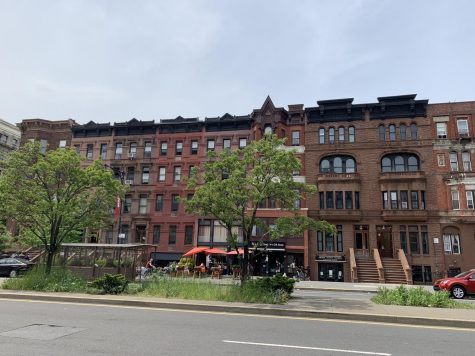
Harlem is most renowned for the Harlem Renaissance and the cultural production from that era. Its famed history is deeply rooted in Black culture and the early 1900s. To this day, Harlem is associated with Black culture, and tourists come for a glimpse of it.
However, Harlem’s history stretches back to the 1600s. It was originally a Dutch settlement, and the name Harlem actually comes from “Haarlem,” a city in the Netherlands. However, the region’s time under Dutch control was short-lived. The British gained control of Manhattan and in turn Harlem, after a successful occupation led by George Washington. Due to its geographical position being further north than the main sectors of Manhattan, Harlem had a slower developmental period. The area boasted fewer inhabitants and as a result, fewer infrastructure and industries. Fortunately, however, this slow growth benefited working class New Yorkers seeking refuge in more inexpensive settlements uptown. During the economic boom in the mid 1800s after the Civil War, the neighborhood experienced an influx of Jewish, Italian, and Black residents.
In the early 1900s, Jim Crow policies and the rapid industrialization of Northern cities resulted in a mass migration of Black people seeking better opportunities in the North. From 1910 to 1930, the Black population in central Harlem jumped from 10% to 70%, while the Italian and Jewish populations dropped significantly. This massive change in demographics gave birth to a period of intellectual and cultural revival, known as The Harlem Renaissance.
Musicians, street artists, poets, and artistic geniuses hidden away behind classic brick wall houses of Harlem created an electric atmosphere and culture. The ’20s were here. Harlemites were riding the economic high, and jazz was being developed in the hallow halls of venues like the famous Cotton Club. Musicians such as Duke Ellington and Louis Armstrong played in the Apollo Theater, and life was good. The smell of soul food enriched the air as restaurants popped up everywhere and tied the new city age hope with old southern tradition.
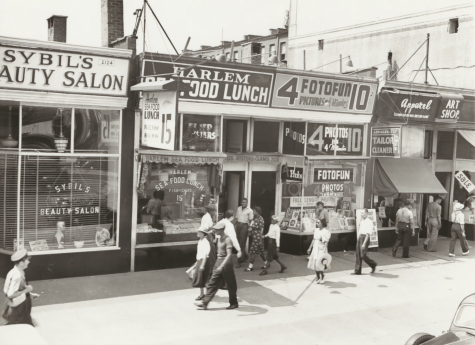
Everything seemed perfect for a time, until the Great Depression hit. As the wealth from the economic boom dried up and people lost their jobs, the razzle-dazzle feeling of Harlem died down. Those who had the economic means left, but the people who could not were left in crippling poverty. Several riots broke out. The neighborhood’s economic growth remained stagnant for decades until the 1970s, for as the left rose in America, so did calls for reform in Harlem.
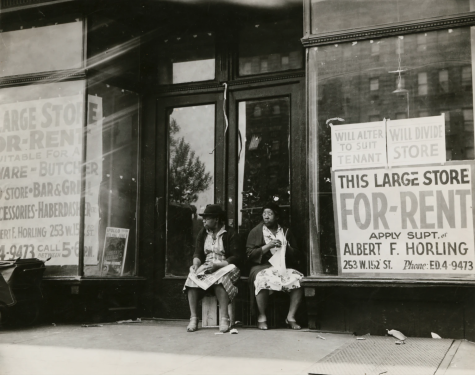
Activists like Malcolm X noted the poor living conditions in their neighborhood and sought to bring back Harlem’s former glory. They led protests and strikes to address these issues, and through these hard fought battles, Harlem gained a new reputation, as a site for change and progress.
Although some progress was made, the improvements failed to revitalize Harlem to its 1920s state. More Black people moved out and by the 1960s, the majority of Black New York City residents no longer lived in Harlem. Many buildings were abandoned and auctioned off at below market prices. In the 1980s, crime rates alongside poverty rose dramatically.
However in the 1990s, the situation pivoted as developers started construction and new residents moved in. The neighborhood began to grow again, but the Black population dropped from 88% to 69%. This trend continues today.
When you walk around Harlem today, especially central Harlem, you are faced with a strange conundrum. You see a mixture of gorgeous brownstones easily worth millions lining the streets, but if you walk a few blocks away on the same avenue, you also see dilapidated buildings with boarded up windows covered in bright red and blue graffiti.
If you go to the corner of 125th and Lenox, you can see the juxtaposition of the street vendors hustling to make ends meet while a brand new Whole Foods lies across the street. But perhaps more ironic is the fact that the epitome of gentrification (Whole Foods) happens to be on Malcolm X Boulevard along with a Starbucks. It is troubling that a neighborhood with avenues named after Malcom X and Adam Clayton Powell Jr (both of whom fought against the circumstances behind gentrification) and a neighborhood that possesses a rich history of Black activism and culture has changed to this extent.
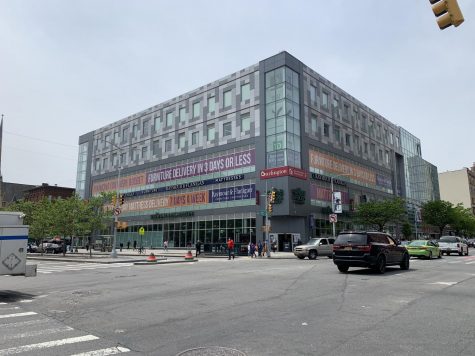
But all is not lost. Although many of its original buildings are gone, Harlem still retains many aspects of its past. Street art and colorful murals remain painted on walls for onlookers to enjoy. The Apollo Theater continues to serve as a venue for the arts, carrying on the legacy of the Harlem Renaissance. More importantly, the legacy of soul food lives on. There is a great diversity in the neighborhood’s restaurants and cuisine, and while the dishes have changed, the high standards have not. Harlem was and still is a pinnacle for dining. Restaurants like Red Rooster add a modern spin to soul food, while timeless staples like Sylvia’s remain next door, waiting to impart a bit of nostalgia onto those who try its food.
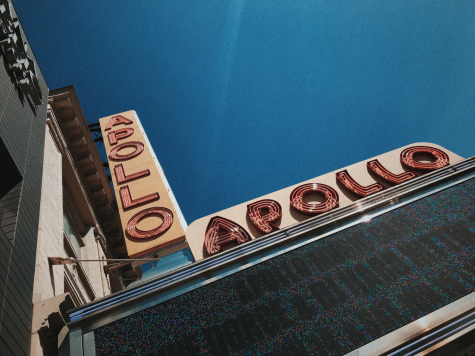
Harlem continues to change and evolve, all all New York City neighborhoods do.
Harlem is most renowned for the Harlem Renaissance and the cultural production from that era.
Carolyn Chui is an Editor-in-Chief for ‘The Science Survey.’ She enjoys writing articles on politics, business, and international relations. Carolyn...

